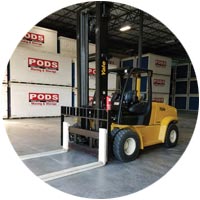Got climate control questions? We've got answers.
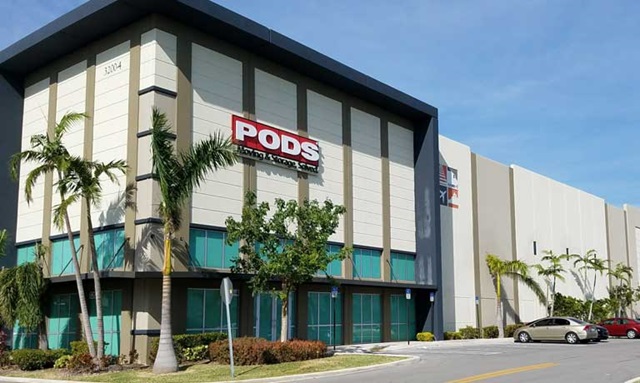
What is climate-controlled storage?
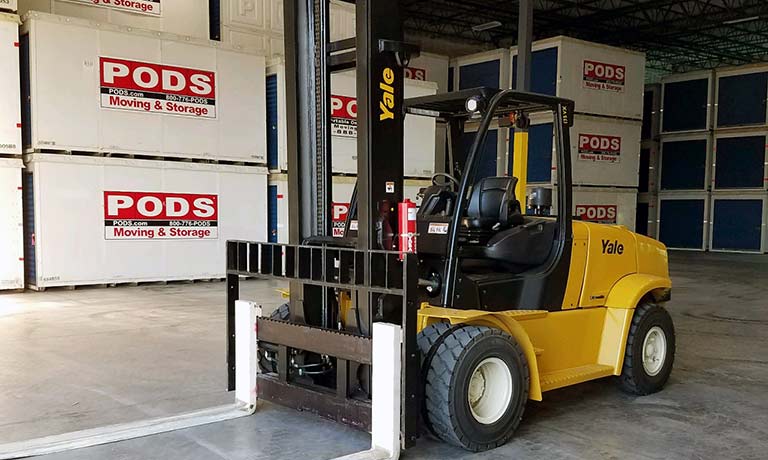
What is the Difference Between Climate-Controlled and Temperature-Controlled Storage?

Do I Need Climate-Controlled Storage?
While the popularity of climate-controlled storage seems to be growing, it may not be necessary or worth the extra cost, depending on what you’re storing, the time of year, and weather conditions in your geographical area.
Some items that may require a climate-controlled, indoor storage environment include fine art, delicate or antique fabrics, paper items such as books and periodicals, electronics, discs, records, and antique wood furniture. Please note that PODS recommends against storing valuable items, such as fine art, or perishable goods, and our lease agreement states that we do not allow these in PODS containers.
If you’ll be moving your items as well as storing them, remember they will not be protected by climate control during transport. So even if you do opt to pay a premium for climate-controlled storage, your items may still be exposed to temperatures and humidity levels outside the normal range.
Keep in mind that humidity levels in climate controlled storage may only be 55%. Specific items such as paper items and certain metals would be better stored in an environment a humidity level less than 55%. So just because you opt for climate controlled storage, it doesn’t guarantee your items would be protected.
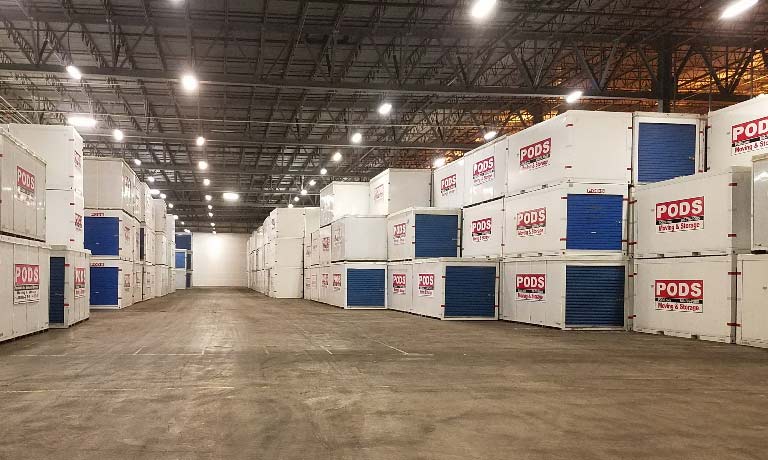
How important is ventilation for indoor storage?
How do I prevent mold and mildew damage to items in indoor storage?
The best way to prevent mold and mildew damage is to take action prior to putting your items in storage.
Inspect your items before you store them.
Before you put them into storage, make sure to carefully inspect all items for moisture or mold and mildew. Everything should be 100% dry. One single damp item could spread mold throughout your storage unit.
Avoid loading your items during rainy weather.
Nothing is worse than moving in the rain, except having mold spread through all your prized possessions. Even just a single damp item could wreak havoc on your belongings.
Store your container at a PODS Storage Center.
Although PODS containers can offer excellent protection for your belongings on your property, if you need to store for more than a few weeks, we recommend keeping your container at a PODS Storage Center.
Protect individual items with blankets and plastic.
Rather than leaving items exposed in your storage container, wrap them individually with moving blankets or plastic wrap, or place them in plastic storage bins. This can prevent the spread of mold in case one of your items is damp or carries mold spores.
Consider using desiccants.
You can purchase moisture absorbers from PODSboxes.com or from your local hardware store. Make sure to read the label carefully, as desiccants are usually only effective for a certain number of days or amount of square footage. They usually need to be swapped out for new ones frequently.
What Should I Watch Out For When Considering Climate-Controlled Storage?
If you’re certain that you need climate-controlled storage, it’s important to be aware that there is no official industry standard for, or regulation of, climate control. Unfortunately, many indoor storage facilities may advertise their storage units as “climate-controlled,” but their efforts to control climate and temperature may be limited to just running a fan in their facilities (no joke!). Make sure to ask storage facilities for their specific temperature and climate standards and what they do to ensure their units stay within these guidelines. If possible, get this information in writing.
Even when an indoor storage unit is advertised legitimately as climate-controlled, storage center owners may not be legally responsible for damage to items. Read your storage lease agreement carefully! You are likely to find a statement that says although the storage facility makes reasonable efforts to avoid temperature extremes, they are not responsible for damaged items.
Aside from asking your storage company lots of questions, the single most important thing you can do to ensure your items are protected from mold and mildew would be to carefully inspect your storage unit, along with every single item that you’re storing, for moisture or mildew before you load your belongings.
Does PODS Offer Climate-Controlled Storage
While PODS doesn’t strictly follow climate control standards, our secure indoor storage facilities and sturdy, steel-frame containers are designed to keep your items protected from the elements. In fact, when you store your container at a PODS Storage Center, you get a “double layer” of protection – the container plus our facilities – further reducing the risk of water damage and exposure to pollen and other air contaminants. When you move with PODS, you can trust us to deliver with care because nearly 99% of our deliveries are claim-free.
Additionally, unlike conventional self-storage facilities, PODS Storage Centers are not open to the public. Access to your container is available by appointment only. And unlike warehouses used by full-service moving companies, only you have the key to your PODS container to access your belongings.
More storage resources
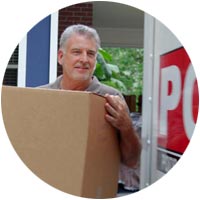
Packing and loading video & tips
Maximize container space and keep your stuff protected with our pro packing and loading tips.

Moving Checklist

